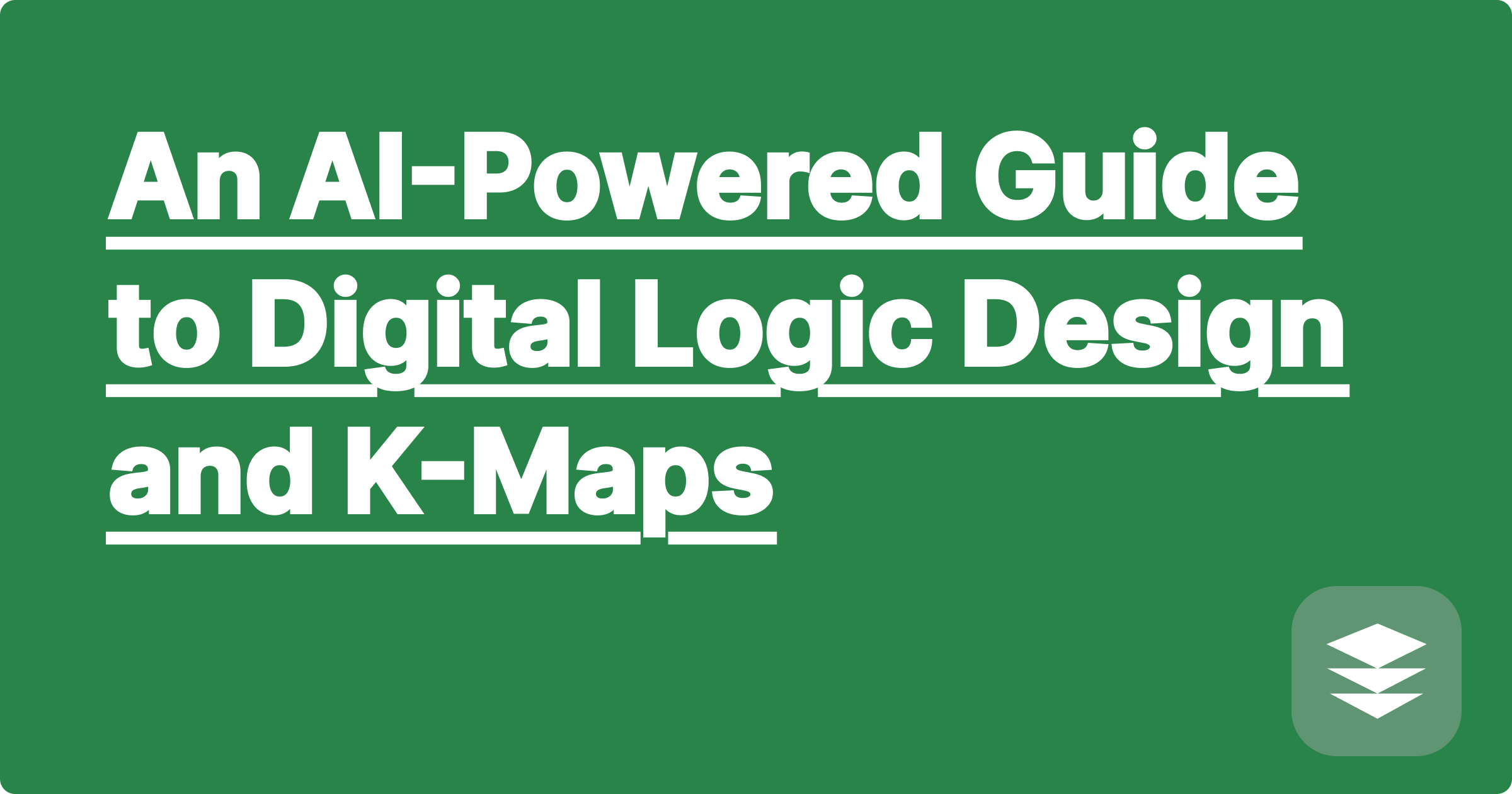
Welcome to the world of Digital Logic Design, the course where you learn the fundamental principles that power every computer, smartphone, and digital device. At its heart, this subject is about one thing: simplifying complexity. Specifically, it's about taking a complex logical requirement, expressing it with Boolean algebra, and then simplifying it down to the most efficient possible circuit using the minimum number of logic gates.
One of the most powerful tools for this task is the Karnaugh map (K-map). However, for anyone new to the topic, K-maps can be confusing. Grouping the 1s correctly, especially in 4-variable or 5-variable maps, is an art form, and one small mistake can lead to a non-optimal circuit.
What if you had an expert assistant that could solve K-maps flawlessly and show you the optimal groupings? An AI-powered k-map solver with steps can do exactly that. A tool like GPAI Solver acts as a powerful boolean algebra simplifier, automating the most tedious parts of digital logic design.
The main goal of logic simplification is to reduce cost and complexity. Fewer gates mean a cheaper, faster, and more power-efficient circuit. The two primary methods you learn are:
Before you even get to K-maps, you can use an AI to check your algebraic manipulations.
Your Prompt: "Use Boolean algebra rules to simplify the expression F = A'BC + AB'C + ABC' + ABC."
GPAI Solver's Step-by-Step Simplification:
This provides a clear, verifiable path that is much easier than trying to spot the pattern yourself.
This is where the AI becomes a true time-saver. Manually drawing and grouping a 4-variable K-map is tedious.
[Image: An AI-generated 4x4 K-map. The cells with 1s are filled in, and there are three large, color-coded loops drawn around the optimal groupings, clearly showing how the simplification was achieved. The final simplified Boolean expression is written below the map. Alt-text: A k-map solver with steps showing the visual groupings.]
Your GPAI Cheatsheet is the perfect place to consolidate your knowledge.
The core skill in digital logic is not the act of drawing boxes and loops. It's the ability to think logically and create efficiency. By using an AI to automate the most repetitive and error-prone simplification tasks, you can focus on higher-level design concepts, like building adders, multiplexers, and state machines, knowing that the underlying logic simplification is sound.
[Stop making mistakes on your K-maps. Try GPAI Solver today for step-by-step help with Boolean algebra and logic design. Sign up now for 100 free credits.]
An AI-Powered Guide to Digital Logic Design and K-Maps
Mastering Your Microelectronics Course with an AI Op-Amp Solver
How to Use AI for Your Chemical Reaction Engineering Calculations
A Smarter Way to Analyze Pedigrees and Genetic Crosses with AI
From Lab Data to Perfect Graphs: Your AI Lab Report Assistant
How to Create the Ultimate MCAT Cheatsheet for Bio & Biochem with AI
Surviving Your FE Exam Prep with an AI-Generated Formula Sheet
How to Solve Your Economics Homework with an AI Graphing Tool
Can AI Help Debug Your Finite Element Analysis (FEA) Model?
The Best Way to Organize and Summarize Your Computer Networking Notes